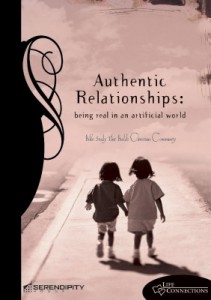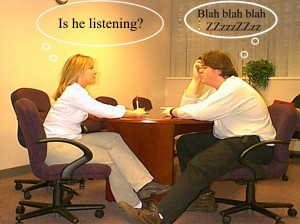Oct 10
20
Traffic Jams on Facebook and Twitter
Get traffic? The volume of “traffic” flowing through Facebook and Twitter feeds make the Los Angeles freeway system look like a rural country lane. But social media experts continue to advise marketers not to transfer the old freeway billboard advertising technique to social networks like Facebook. Unlike the freeway, the traffic on the new internet superhighway is becoming “social.” It is supposed to be about relationships, not just eyeballs.
It is relationships that give social media greater influence than traditional advertising. Referrals from friends that we trust carry much more weight in buying decisions than ads from strangers.
It seems to me that there is an inherent conflict between quantity and quality when it comes to forming and maintaining real relationships on social networks. The more Facebook friends we have, the more traffic we have to sort through in order to authentically participate in online conversations. I don’t know how people with full time jobs have the time to maintain hundreds of “relationships” among their 5000 “friends.” I am thankful that I have residual “royalty” income from network marketing, so that I can devote hundreds of hours to this social media hobby.
Can your auto-responder REALLY fall in love with my auto-responder? Apparently new versions of mass-marketing methods are required if we wish to communicate with huge volumes of traffic. Directing the traffic is only the beginning. Selling en masse involves tools that initially seem impersonal.  PPC ads seem like billboards until we develop some semblance of a relationship with individual members of the pay-per-click “traffic.”
PPC ads seem like billboards until we develop some semblance of a relationship with individual members of the pay-per-click “traffic.”
Posted in Business Relationships Social Media Relationships Uncategorized by .
Oct 10
9
The Social Network
The social network online is only part of the real global social network, which includes human society as a whole. The old email chat acronym, IRL (In Real Life), no longer makes sense, if it ever did. Most of what constitutes human life, such as emotions, reasoning, needs, wants, and commerce, exist online and offline, and often overlap both. Networking online is very similar to networking offline. It’s all about relationships.
As always, the intention is to meet new people, get them to know, like, and trust us, and then to either sell them something or leverage their trust and influence in order to expand our contacts and influence. The most effective way to network is to give first, offer help and value, establish relationships, and become the friend they think of first when they have a need for what we have to offer. Businesses cultivate relationships with their customers and get referrals and repeat business.
The media keep getting faster, more efficient and convenient, more visual, but the human beings on each end of the communication have not changed much in thousands of years. We are all “branding” ourselves on the internet or IRL 😉 as we become known and build a reputation. Once we have developed trust, our influence is powerful. As Stephen Covey says, the speed of trust is amazingly fast.
Online social media are simply NEW MEDIA for communication. The internet in general , and social networks in particular, are the latest in a progression of media which have helped us to overcome distance between people: mail, telegraph, telephone, television, etc. Friends and followers who originally met offline are also communicating online, and vice versa. Meetup.com, Evite, et al, straddle the boundaries between online and offline. Video Conferencing and webcams allow humans to communicate at a distance virtually face-to-face.
Astronauts sent breathtaking photos from the International Space Station to NASA, which posted them on YouTube and sent links via Twitter! The Shuttle Commander invited us to post video questions on YouTube and send a link to his Twitter account. He promised to answer the video questions by video from space! Cross-links and shared content among Facebook, Linkedin, Twitter, Youtube, and WordPress are becoming standard operating procedure. Facebook has a group of “Networked Blogs.” You can make Skype calls right from within Facebook. So even the social network is networking with other networks!
Oct 10
5
Choose Your Partners
Social media allow us to get to know each other before we decide to do business together. This is one of the things I like about network marketing too. We can choose to work with whomever we want. I think that is better than taking a chance on “buying a pig in a poke” from leads, like blind dates. Choosing your network marketing team is like choosing a baseball team.
“Partnering” for blog syndication or for network marketing is less risky than partnering in traditional business, but it still involves mutual commitments, expectations, and interdependencies. Even with the leverage of internet tools our time and energy is limited, so it is wise to consider the 80/20 Rule and be somewhat discriminating in choosing partners.
In the Negotiating Space blog, Dr. Karrass wrote:
Outside associates and partners are powerful assets to have. You will have partners in your field, or in allied fields. You may partner with companies that are located in or that service your area. You may choose partners who have specialized knowledge you don’t have.
Being able to rely on your associates and partners is essential and you will want to make sure you don’t have conflicts of interest. Use good judgment and keep ethical considerations in mind when choosing your partners, so you may fully leverage your association with them.
Sep 10
26
Leads or Leaders? Your Choice!
Sales and network marketing are related but different professions. Of course there are various hybrids and blends. But for this discussion let’s distinguish between these fields based on their fundamentals. Either profession can be practiced online or offline. I love the internet and the technological leverage. It reminds me of the leverage of networking, which is based on exponential leverage. In internet terms, that would be called “viral.”
As in any other profession, some are more skilled than others. In sales some are persuasive “pitch men” or clever closers. Some are hypnotic ad copy writers. Some have access to huge lists of warm leads. One nice thing about networking is that whatever skills or resources you don’t have, others in your downline may have. In networking, as in leadership, it is wise to surround yourself with people more skilled than yourself, if you can. In network marketing what counts most is what your group does; it’s not about your personal sales.
The salesperson seeks to personally sell as many products as possible–directly to customers. Even in the sales profession the big money is usually in sales management. Training a professional salesperson takes months or even years, and the income is usually small for a long time. Because the commissions come from personal sales, it is necessary to make many sales to make a living. This requires lots of leads. A “sales funnel” describes the sorting of leads into “suspects,” into “prospects” and then into customers. Ten customers out of 1000 leads is considered good. 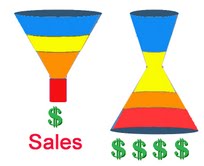
In network marketing the “funnel” is turned upside down. It only takes a few leaders to multiply into thousands of customers. In the best case scenario the number of customers is far greater than the number of leads with which the networker started! For example, in my experience, I have sometimes had an average of more than 100 customer sales (by my organization) per one original lead of mine. In that example, everyone I asked to look at my business, on the average, turned into over 100 customers.
For example, in one business, I chose not to approach my friends or family (“warm market”). I recruited one or two strangers per month, turned cold market into new warm market relationships, and helped them talk to their prospects (some warm and some cold). I taught duplication by keeping it simple and being authentic. By the end of the first year my organization was about 5000 strong, and my income exceeded five figures per month. The next year was even much better, and so on… This is just a real life example and not numerically typical of the average networker. Disclaimer: I am not promising that you would make that much. Probably not. But understand the concept of exponential multiplication of your efforts, as compared with having to continually make personal sales.
The fact is that I approached a total of about one or two hundred “leads” (cold prospects) one or two a week over a period of two years, recruited 25, out of which 5 were leaders. Each of them, with my help, recruited about 10 or 20, etc., etc., and our organization grew into tens of thousands of customers! Albert Einstein has been quoted as saying, “Compound interest is the eighth wonder of the world.” I especially like the residual income from networking. It is like “royalties” from patents or book writing. In my opinion it is much easier than owning rental real estate–and cheaper to acquire.
I have found that professional salespeople have much difficulty understanding this wonderful exponential phenomenon. They typically fail in network marketing, because they think it is about what they do personally, rather than what their group does collectively. Teachers typically do much better than salespeople in the network marketing profession.
Leveraging Trust and Influence
Business networking is about leveraging trust and influence and multiplying your sphere of influence by the influence of others. Attraction is a kind of influence. “Personal Branding,” perhaps synonymous with reputation, may help with attraction and personal direct sales. Sales and marketing have their place in free enterprise, but network marketing provides leverage, synergy, and passive residual income. I certainly don’t want a job on straight commission.
Trading connections with a “tribe” is a good form of networking. Each member of the tribe brings a network (large or small) of relationships acquired in the past by natural reputation building (their “brand”). Sharing our networks with each other expands our contact base.
In a sense, we are all branding, all the time. Everyone who has not been hiding under a rock has acquired a reputation, which might be called their “brand.” However, I am concerned that the popular emphasis on “personal branding online” may have negative side effects for network marketers. In a previous post I mentioned some costs of focusing on deliberate online personal branding–mainly time, effort, and opportunity cost. In network marketing, if we teach our downline to take time to “brand” themselves online before they go “viral”, we could multiply LOST time and effort exponentially.
The time and effort our downline spend trying to “brand” themselves may delay duplication, and the opportunity costs of compounded lost time may actually skyrocket exponentially. Of course we could try to tell them to “do as I say, not as I do,” but they tend to want to do what their heroes do. Most people are “copy cats.” However, that is not the point of this post.
I think we can all agree that people prefer to buy from those they know, like and trust. This has always been the basis of network marketing, which is also called relationship marketing or word-of-mouth advertising. One of the best-selling books of all time is still a best seller 74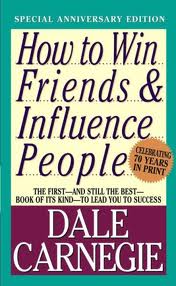 years after it was written! More than 30,000,000 copies have been sold–and counting! Its popularity derives from the extreme value of knowing How to Win Friends and Influence People. I credit that book as a major cause of my success in life and specifically in network marketing.
years after it was written! More than 30,000,000 copies have been sold–and counting! Its popularity derives from the extreme value of knowing How to Win Friends and Influence People. I credit that book as a major cause of my success in life and specifically in network marketing.
Please pardon me if I mention a couple of credentials to validate what I’m about to say. My specific major in graduate school, within the field of Social Psychology, was “Interpersonal Attraction.” In real life I have been a leader of people in several different fields. In network marketing, I’ve been well above the top one-hundredth of one percent in organization building.
One thing I know for sure is that you are more interested in you than you are in me. If one wants to be attractive, it is more effective to be interested than interesting. People are more attracted to a good listener than to a good talker. Sincere authenticity is more effective than hype. One of the most successful multi-millionaires I have known said, “My mission is for all the people I meet to like themselves better because they met me.”
New prospects for network marketing have three main questions in mind. First, “What’s in it for me?” Second, “Can I do it?” And third, “Will you help me?” The third question may relate to branding yourself as one who can help them. But most network marketers agree that the second question is the issue that stops most people from joining you. They are afraid that, even if it works for you, it will not work for them. Often they think, “Well, that’s fine for people like you. You’re a salesman, or you have an office, or you have a blog, you have a well-known brand, or you have a large list, or thousands of followers, but I don’t think I could do that–so I won’t dare try.”
A 7-figure network marketer I knew said, “I never do anything that anyone else can’t copy.” One secret of my success is that thousands of people said to themselves (compassionately), “If HE can do it, then I could do it!” 😉 Some said I was “dumb like a fox.” I have spent most of the past year trying to brand myself, leaving my network marketing business totally on autopilot. Meanwhile, fortunately, I’ve been able to live on the residual income from past networking. 🙂
Sep 10
10
We Are All Branding, All The Time!
Branding is usually  associated with commercial brands for products or services. But personal branding, whether online or offline, is a matter of reputation. As you interact with others, they may come to know, like, and trust you. They are open to buying what you have to offer. They may even believe in the value you have to offer their friends. They may refer you or recommend you to their friends.
associated with commercial brands for products or services. But personal branding, whether online or offline, is a matter of reputation. As you interact with others, they may come to know, like, and trust you. They are open to buying what you have to offer. They may even believe in the value you have to offer their friends. They may refer you or recommend you to their friends.
Social media and other internet tools are simply new channels of communication to accomplish what we have always enjoyed: friends, followers, and centers of influence. Networking is about leveraging trust and influence. People don’t like to be sold, but they like to buy–from those they know, like, and trust. The concept of “six degrees of separation” from anyone else on earth (leveraged connections) is enhanced by the global exposure of the internet, but the old adage, “Any friend of yours is a friend of mine,” still applies.
Sep 10
2
3 Reasons NOT to Brand Yourself
To “brand,” or not to brand; that is the question.
With internet branding comes extra burdens and risks which may be unnecessary to achieve your goals. In fact, making yourself “the issue” may even be counter-productive. I know, I know; branding is “in.” Internet marketers, in this decade, love the idea of becoming famous in the hope of becoming rich. A few do succeed. But it is complicated and it takes a lot of time and usually money.
Internet Marketing is Different from Network Marketing
It should be noted that internet marketing is different than network marketing, which is about leveraging trust and influence through relationships multiplied.
Network marketers are catching the branding fever, too, which is ironic, because for 40 years successful MLM leaders have preached: “do NOT make yourself the issue.” I wonder if young “new school” networkers really understand why not. Of course, the main reason is that the goal of network marketing is rapid exponential “duplication.” In modern terminology, you want it to “go viral!” Remember the KISS (Keep It Simple) principle. Ideally, your organization could be six levels deep in a week — if your method is simple and easy to duplicate.
The second reason is that network marketing is also about leverage, rather than doing it yourself. The MLM dream is to create a business that “will run by itself,” so you can have passive residual income. The ideal is to let the company invest millions in world-class websites, videos, and marketing literature, let the upline do the presentations and training, and let the downline bring the prospects. By the way, I don’t think I ever heard the term “leads” during my first twenty years of successful networking. Advertising was rarely used.  It was always about relationships.
It was always about relationships.
In fairness, I acknowledge that there are many arguments in favor of branding. The reasons are well explained in other blogs and articles. You might say I’m playing “the devil’s advocate” here. I admit that even I am in the process of investing a few thousand hours and a few thousand dollars to brand myself. I’ve already paid young internet marketers thousands of dollars for training. I’m just saying that it would be wise to know what you’re getting into when you begin the arduous task of self-branding.
Posted in Business Relationships Personal Alliances by .
Social media has powerful potential for viral exposure. But studies have shown that more than two-thirds of Facebook users say that “Liking” a “Fan Page” does not mean permission to send me advertising messages. Marketers need to understand that the vast majority of “Fans” click that they “Like” a page as a message to their friends, NOT a message to the marketers.
 This is “good news/ bad news” for marketers. Businesses that understand this can take advantage of the passive referral advertising without annoying their “Fans.” People love to buy, and they like to share their discoveries with friends. People trust their friends recommendations. However, they do not like to be sold to.
This is “good news/ bad news” for marketers. Businesses that understand this can take advantage of the passive referral advertising without annoying their “Fans.” People love to buy, and they like to share their discoveries with friends. People trust their friends recommendations. However, they do not like to be sold to.
Posted in Business Relationships Social Media Relationships Uncategorized by .
Aug 10
18
Building Trust with Social Media
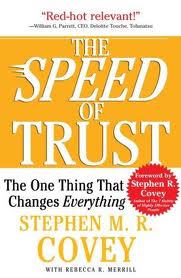 Trust is a key component in business (and personal) decisions. Greg Ferenstein wrote an interesting post on the Mashable blog about trust in social media, in which he quoted Professor Judith Olson, who has studied the essentials of building trust in digital communication. One of her most important findings is that “responsiveness is key” in building trust:
Trust is a key component in business (and personal) decisions. Greg Ferenstein wrote an interesting post on the Mashable blog about trust in social media, in which he quoted Professor Judith Olson, who has studied the essentials of building trust in digital communication. One of her most important findings is that “responsiveness is key” in building trust:
People are willing to pass judgment, with or without good information. Where examples of one’s competence or reputation are lacking, people will construct whole profiles of another’s personality from what little information is available.
In e-mail, Linkedin
and Facebook
messages, much of the traditional markers of trust, such as voice intonation and body language, are hidden. Olson finds that when only text is available, participants judge trustworthiness based on how quickly others respond. So, for instance, it is better to respond to a long Facebook message “acknowledging” that you received the message, rather than to wait until there’s time to send a more thorough first message. Wait too long and you are likely to be labeled “unhelpful,” along with a host of other expletive-filled attributions the mind will happily construct.
Posted in Business Relationships Social Media Relationships Uncategorized by .
Aug 10
10
Social Media Strategy
Begin with the end in mind. As a leadership consultant I have always asked “WHY” before “WHAT.” Intention helps focus efforts in the direction of desired results. Craig Galati wrote about social media strategy in the Las Vegas Sun:
Social media is important, but it must fit into a marketing strategy. Social media is a marketing plan implementation tool and is not,
itself, a marketing strategy. In other words, social media can help you implement your strategy but it is not the strategy. I say this because there was so much buzz around the conference regarding Twitter and since I have returned I have been followed by an additional 25 people. I’m not convinced that many of them have thought much about the reasons they are using social media and how it fits into their marketing strategy.
Social media can help one build relationships. I don’t think anyone will argue that relationships are important to your overall business marketing strategy. Social networking can help build and further your relationships and relationships with your firm. I am connected to several friends and colleagues, many of whom I rarely see, through Twitter, LinkedIn and Facebook. One of the most amazing things is that when I do run into these friends and colleagues, or we get together, we are up to speed on what’s been happening in each other’s lives and our conversations have a great starting point.
Content is key. If you have been on Twitter for even a short time, I’m sure you have been bombarded with tweets telling you how to increase your followers. I’ve got a sure fire way too: write something compelling and worth reading. If you are using social media to build relationships, then content is key.
One of my favorite new tech tools is Google Hangout, which allows you to VIDEO CONFERENCE FOR FREE with up to 10 people in different locations live and also recorded to be viewed ( live or on replay ) by an unlimited number of viewers!
The foundation of any lasting relationship is a positive value exchange. In personal relationships the value is often intangible. It may be a subtle deposit in what Stephen Covey calls the “emotional bank account.”
Making such deposits spontaneously and without calculation is most effective. In fact being relatively unconscious of the value exchange may be advantageous, because of the importance of sincerity. But we can enhance our relational value by practicing the habit of noticing things we truly like and giving sincere praise and recognition. We can choose to invest attention, which is often valued more than money. We can ask ourselves frequently, “How can I help?”
Ted Rubin offered valuable advice in a post on The Social CMO Blog:
To build relationships online, you (brand or individual) have to offer something in return, such as valuable information, personal introductions to your already-established connections, or even part of yourself through engagement and interaction.
It’s no longer enough to just suggest that someone should be interested in your product or service. You need to engage your market — ask questions, propose ideas, or simply communicate through social media in a way that gives your followers a chance and a reason to respond.
Then when they respond, interact with them to solidify the relationship, or it will just fade out. Directly acknowledge their response, ask follow-up questions, and share their insights with others. Don’t simply be responsive, be incredibly responsive. Always acknowledge those who reach out or spread your ideas.
Jul 10
31
Sincerity, Similarity and Attraction
Authenticity On Social Networks
A psychological study revealed that out of 400 adjectives that describe personality characteristics, the #1 most attractive was sincere, and the #400 (most unattractive) was phony. People like authenticity.
Philosopher James Allen, in his Essay on the Eight Pillars of Prosperity, wrote, “Attractiveness, like genius, is lost by being coveted, and possessed by those who are too solid and sincere of character to desire it.”
Faking is Counter-Productive
This presents a dilemma for the person who wants to be attractive, whether online or offline. In her song, “Come From the Heart (click for video),” Kathy Mattea quoted Mark Twain’s advice: “Dance like nobody’s watching; love like you’ve never been hurt. Sing like nobody’s listening; live like it’s heaven on earth.” Kathy added, “There’s such a thing as trying too hard.”
Similarity and Attraction
One of the most consistent findings in social psychology is that similarity, especially similarity of of attitudes and personality, has a powerful positive influence on interpersonal attraction. The danger in focusing on this fact is that one is tempted to fake similarity in order to be liked. Deliberate mirroring often backfires and may be counter-productive. Remember that phony is one of the most disliked characteristics.
Besides the attractiveness of sincerity, being your authentic self has another benefit. The types of people you attract will tend to be the kinds you will like and enjoy associating with. After all, there are more than enough people on the internet to become friends with. Why not attract the ones who are attracted to the real you? Then you can relax and be comfortable, knowing that you don’t have to concentrate on playing a role or keeping up a facade.
In blogging and social media marketing we often read that “content is King.” The “King” in networking is caring! Top Leaders in network marketing all concur that “People don’t care how much you know until they know how much you care.”  Computer geeks are always looking for “the killer app”, i.e., the “next big thing” in software or technology. Tim Sanders, Chief Solutions Officer of Yahoo, offered the solution in his book , Love is the Killer App.
Computer geeks are always looking for “the killer app”, i.e., the “next big thing” in software or technology. Tim Sanders, Chief Solutions Officer of Yahoo, offered the solution in his book , Love is the Killer App.
My thoughts on this subject are expressed very well in a blog called “12 Minutes Past Midnight” :
I have come to recognize that the greatest skill in MLM is “Caring”. The statement that I hear the most when people are complaining in their work environments is “My boss does not care about me”. People are complaining that their boss, the management or their Upline doesn’t care about them because they need to be recognized.
You’d think complaining or being upset about lack of money would be the main issue, right? But even in jobs where the pay is great you hear the same thing. Because people should “matter”. When you think that those around you could care less about you or your family situation it is not at all a great feeling.
In reality, people need to be recognized for their effort, their good work and they want to be heard when they’re seeking help. This is even more so in network marketing.
Posted in Business Relationships Platonic Friends Uncategorized by .
Jul 10
27
Relationships Depend on Follow-up!
Whether online or offline, nurturing a relationship is like growing a rose garden.  It takes patience and persistent attention. Following up is like fertilizing and watering your relationship roses; it must be done consistently to keep them alive and flourishing.
It takes patience and persistent attention. Following up is like fertilizing and watering your relationship roses; it must be done consistently to keep them alive and flourishing.
But not all follow up is created equal. Just as some gardeners grow prettier roses than others, some sales people are more effective at follow up than others. It takes more than a simple, “nice to meet you — let’s keep in touch” or “Let me know if I can help,” to grow a beautiful relationship.
Whether online or offline we need to engage and interact to build relationships
The fortune is in the follow-up!
Ian Brodie helps independent Professionals find, win and retain clients. He recommends the following in his blog:
Many people who we would like to build a relationship with may not immediately see the value in building a relationship with us. But we can significantly increase our chances of this if we follow-up effectively.
The best follow-up is one that adds value to the recipient. Perhaps some thoughts to help them, or links to useful resources. The more it’s clear you’ve thought about them and how to help them, the more likely they are to classify you as “someone to trust”.
Of course, in order to do that, you need to understand what might be useful to them. And that means that you need to ask them questions during the event (and remember or take note of the answers) to identify what would be helpful. Understanding their business challenges or goals is critical to this.
If you want your friendship flowers to bloom, you have to follow up well. If you don’t have time to follow up, maybe making more contacts is wasting your time. Do you have “Relationship Overload” ?
Posted in Business Relationships Internet Tribe Relationships Personal Alliances by .
Jul 10
19
Social Media Campaign
Social media campaigns need to be different from advertising campaigns which push products. Unfortunately the more you try to sell, the less you sell. The situation is analogous to the rest of life, where focusing on contribution leads to more success than chasing personal gain. Modern c onsumers are wary of pitches and commercials. People love to buy (from people they know, like, and trust), but they do not like to be sold. Give first, and they will want to buy from you. If you learn to sincerely enjoy helping others get what they want, (paraphrasing Zig Zigler) they will enjoy helping you get what you want.
onsumers are wary of pitches and commercials. People love to buy (from people they know, like, and trust), but they do not like to be sold. Give first, and they will want to buy from you. If you learn to sincerely enjoy helping others get what they want, (paraphrasing Zig Zigler) they will enjoy helping you get what you want.
On the Converge Technologies blog, Taha Hameedi wrote a post that explains how to approach a social media campaign:
Social media is ultimately about relationships. It should be viewed as a two-way street. As a brand, you aren’t there to promote a product, you are there to communicate and relate. If you approach social media with sales as your end goal, your audience will notice and, most likely, you will be ignored.
On the other hand, if you offer your audience something of value, and your message is genuine, aka you aren’t faking it, consumers are inclined to listen. Offer users engaging content, helpful information, streamlined customer service, or incentives like discounts and free gifts consistently, and you have the makings of a healthy long-term relationship with a brand ambassador willing to sing your praises to the world.
Posted in Business Relationships Personal Alliances by .
Jul 10
18
Real Moments
“Time is of the essence,” “Time is money,” “Time is life!” Each year we have over half a million minutes — about 50 million in a lifetime, but not all moments are equal. In fact most of the minutes in our lives are wasted! Pareto’s Law , the Law of the Vital Few and the Trivial Many, applies to the way we squander our time on this earth. The encouraging implication of Pareto’s Law is that we can compress more of the essential stuff of life into whatever time we have left — if we concentrate on the vital few!
, the Law of the Vital Few and the Trivial Many, applies to the way we squander our time on this earth. The encouraging implication of Pareto’s Law is that we can compress more of the essential stuff of life into whatever time we have left — if we concentrate on the vital few!
As we remember our many years, it is only a few precious peak experiences that we treasure. Barbara DeAngelis, Ph.D., calls these “Real Moments” in her book by that title. As I consider the real moments in my life, I realize that most of them involved sharing an experience with a friend, or sharing love. This is why I want to focus my attention on building relationships, whether online or offline. Social media are power tools to facilitate communication — if we learn how to use them effectively.
Posted in Family Relationships Platonic Friends Romantic Relationships by .
Building relationships with social media is very similar to the way relationships have always been built. Humans haven’t changed very much in two decades of internet (or even in thousands of years). I suspect that that the “secret” exposed below would have applied equally well to cave dwellers or stone age tribes. Although we have super power tools for communication now, relationships are still about investing attention and helping each other.
 Networking is still a matter of connecting people and leveraging contacts, trust and influence. Perhaps social media can increase the speed and efficiency of the process now, hopefully without much loss of quality.
Networking is still a matter of connecting people and leveraging contacts, trust and influence. Perhaps social media can increase the speed and efficiency of the process now, hopefully without much loss of quality.
In Client Magnets Official Blog, Bernadette Doyle disclosed “The Secret to Relationship Building“:
Relationship building is about paying attention to what people say and do, what they have to offer and what they’re looking for. If you know that John owns a plumbing business and Sally had a pipe burst, you can connect John and Sally and they both benefit. Sally gets her pipe fixed, and John gets some business. They’re both grateful for you because they both benefited, and if they can do something to help you or your business, they’ve got a personal reason to do it.
You don’t just have to connect people who have overlapping niches or a business interest in one another. You can also connect people who have something in common faith-wise, or family-wise; people who have shared interests but don’t know one another. This helps them because it gives them someone else who shares their interest, and it also makes them like you more because you paid attention and noticed this about them. Again, this puts a lot of money in the relationship bank account, even if it doesn’t impact you directly.
To practice good relationship-building skills, try introducing at least four people per day to one another via Twitter or some other social networking platform. If the connection is helpful to them, it puts a lot into the relationship bank account in terms of gratitude to you for connecting them. Even if the connection isn’t helpful, people will appreciate the effort and it will put some money into the relationship bank account because you went out of your way to make an effort on their behalf.
Relationship-building doesn’t have to be a monumental effort. You can do it via Twitter or another social networking platform. All you have to do is pay attention to what people say, and match people who have similar interests or might benefit from knowing one another. It’s a simple process that can yield big benefits for you and your business.
Jul 10
13
Internet Relationships or Illusions?
Real Relationships Online
My intent in this blog is to help readers, as well as myself, get as much value as possible from social media relationships. What kind of relationships do you really have with Facebook Friends and Twitter followers?
How does a virtual relationship differ from an offline relationship? We may get some clues from an article Mayhill Fowler wrote in the Huffington Post, entitled Taking the Me from Social Media, quoted below:
But the heady sensation of connectedness induced by social media whisks the user quickly past contemplation of the sands upon which these Internet relationships are built.
The speed of the back-and-forth, sometimes near instantaneous, and the collapse of space and time encourage a false intimacy. Indeed there is something about the feeling of disassociation that accompanies an encounter in virtual space that breaks down inhibition. Paradoxically, I am at one and the same time exhilarated by the possibilities inherent in the essential anonymity of the web as I am impelled to share more than I would ever consider doing in person, in real social situations. Virtual space is a version of outer space, where the weightlessness is a freedom from consequences, as well as from the demands of actual relationships.
This illusion is amplified on Twitter, where the relationship is particularly skewed. I know few of my followers on Twitter. They are like imaginary friends. Even as I am tweeting, I am constructing in my mind responses. Occasionally, like a message from a distant satellite, I get a DM (direct message) or retweet in reply. But the interchanges tend to be brief and fragmentary.
Jul 10
10
Business on Twitter; Don’t Try It
 If deals ARE, indeed, made on the golf course, it is probably on the 19th hole 😉 Pitching your business at a Rotary or Kiwanis meeting is clearly frowned upon, although your fraternity brother might be the first person you think of when you need his professional services. Even at a Chamber of Commerce “After Hours” networking event, the most effective business strategy is to NOT pitch your business. Networking is about getting acquainted and making friends. The same is true on Twitter. Relationships first!
If deals ARE, indeed, made on the golf course, it is probably on the 19th hole 😉 Pitching your business at a Rotary or Kiwanis meeting is clearly frowned upon, although your fraternity brother might be the first person you think of when you need his professional services. Even at a Chamber of Commerce “After Hours” networking event, the most effective business strategy is to NOT pitch your business. Networking is about getting acquainted and making friends. The same is true on Twitter. Relationships first!
“Do not use Twitter for business,” says Graham Jones, Internet Psychologist, in a very insightful article on his blog. He writes:
The companies making money from Twitter are not using it as a business tool. Far from it; they are using it as a social tool…
…business has always been about relationships. You got more business from existing clients by socialising with them – having lunch, playing golf, going down the pub, even, perhaps, going to their daughter’s wedding…Instead of filling their minds with “buy this” messages, you sat down with them, chatted with them, asked them questions about themselves…Yet, despite not talking about business, you got more of it from these people.
Posted in Business Relationships Personal Alliances by .
Conversations about networking and business relationships often evoke the aphorism, “It’s not what you know that counts; it’s who you know.” I believe that both factors are obviously important, but the often overlooked fact is that what is even more important is how they feel about you.!
The factors that really count include: what you know, who you know, what they know, who they know, what they know about you, and especially how they feel about you. Networking derives its power from leveraging trust and influence.
Networking is much more than exchanging contact information! Otherwise, we might as well use the Yellow Pages, which has the advantage of an index…
Posted in Business Relationships Internet Tribe Relationships Personal Alliances by .
Traditionally advertising has been pushed to consumers. In contrast, social media have given control to consumers. Hank Wasiak, in an article on Mashable.com, pointed out:
Marketing has traditionally focused on the four “Ps”: Product, Price, Place and Promotion. Social media has morphed into the fifth, and possibly most important “P”: People. A people strategy is at the center of today’s dynamic and fluid social marketing mix. John Janitsch of Duct Tape Marketing has another take on the four Ps, and has turned them into four Cs for the social age: Content, Context, Connection and Community.
A people strategy is much broader, deeper and more profound than consumer targeting. It involves listening to and engaging with everyone who can touch or influence current and potential customers at all stages of brand interaction.
Agency owner Hugo Guzman discovered that C-level executives are only beginning to grasp the implications of social media for marketing purposes. The following is an excerpt from his enlightening post, C-level Conversation Reveals that Social Media Marketing is Truly in its Infancy Stage:
When I explained that my agency’s approach was focused primarily on making human connections with key influencers in his brand’s niche (key bloggers, Twitter users, forum admins, etc) and to then leverage those connections to establish rapport and long-term relationships with these influencers, so that they could in turn share the brand’s message with their networks, my C-level friend was truly flabbergasted. Apparently, this was the first time someone came to him with such a grass-roots approach, and he really dug it and understood it at an intuitive level.
Posted in Business Relationships by .
Jul 10
7
Relationships Matter
“it’s a pretty good bet that we really are here to make friends,” according to Peter Bregman, CEO of Bregman Partners, Inc., a global management consulting firm. An excerpt from his article, Why Friends Matter at Work and in Life, in the Harvard Business Review is quoted below:
To be a good friend, you have to give of yourself, but not so much that you lose yourself. You need to know what you want and pursue it, while helping others achieve what they want. You need to have personality while making room for, and supporting, other people’s personalities. You need to care about, and even love, people you might disagree with… You need to be willing to give at least as much, if not more, than you take.
Posted in Business Relationships Platonic Friends Uncategorized by .

image credit to Dr. Beth Cabrera
Quantity or Quality of Social Media
Connections?
Social media culture seems to place an overwhelming emphasis on quantity of “friends,” “followers,” and “Fans.” Yet most social networkers claim that their goal is relationships. “Dunbar’s number” (approximately 150) is a theoretical cognitive limit to the number of people with whom one can maintain stable social relationships, according to anthropologist Robin Dunbar.
Realistically, do we have to sacrifice quality for quantity?
I assume that most people would like to increase BOTH the quantity AND the quality of their relationships through the leverage of social media. This goal presents challenges, because time (life) and attention have finite dimensions. Is there a limit to how much time and attention we can devote to relationships?
First of all, I recognize that for internet marketers quantity may have its own value in what used to be called “eyeballs” during the “dot-com bubble.” Sometimes the goal is simply exposure. If you have an ad or an offer that you want seen by as many eyeballs as possible, then quantity may be the dominant factor. However, even in that scenario, a “targeted” audience (or list) of “qualified leads” would be desirable.
Consider Pareto’s Law, otherwise known as the 80/20 Rule, or the law of the vital few and the trivial many. If we could anticipate which 20 % would produce 80% of our desired results, we could focus our finite resources on those. In the realm of social media, we might increase our odds by paying more attention to the profiles of those we invite to be friends. In other words, thinking like a salesman, we might pre-qualify our prospective “friends” and “followers.” Then when we invest our precious time really communicating with those new friends, we might have Pareto’s Law on our side. 🙂
In the early stages of participation in social media, we tend to be “hungry” for more quantity, and we may accept anyone indiscriminately. This tendency may come back to haunt us when we reach the Facebook limit of 5000 friends, or when we get bogged down in twitter clutter or an overwhelming quantity of feeds on our wall or home page. The laser metaphor dramatically illustrates the power of focus. What if we really concentrated our time and attention on the 20%ers?
Relationships come in many varieties: romantic relationships, strategic business alliances, customer relationships, family relationships, et al. I believe it is wise to begin with the end in mind. What are you looking for? Social media provide efficient tools to communicate, and all relationships thrive on communication.
What do you think are the best ways to nurture relationships online? I am seriously looking for answers. This post is a work in progress. I expect to post on this blog the best methods of cultivating relationships on social media. For starters, let’s begin with:
1) Read their profile before inviting someone to be your “friend” on Facebook, and include a personal message in your invitation,
2) Reply to messages and comments to keep the conversation going — on Facebook and Twitter,
3) “Listen” to what the other person is saying on Facebook and Twitter, and respond to their thoughts and their photos,
4) Read and comment on each other’s blogs and link to their posts,
5) Join the conversation in forums, and single out those you resonate with,
6) Answer questions and offer help, and give your contact information, and
7) Take it offline…
Posted in Uncategorized by .


